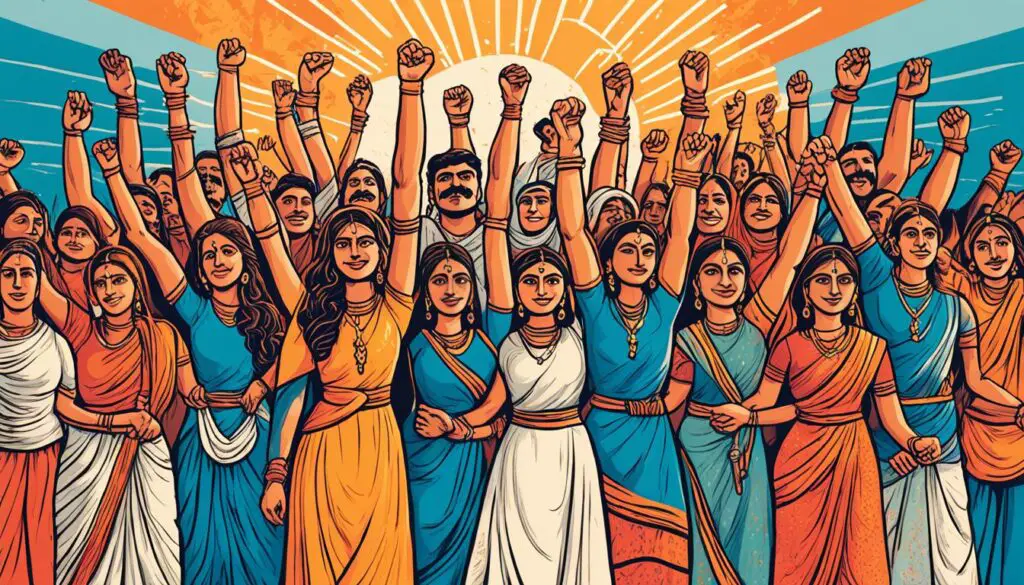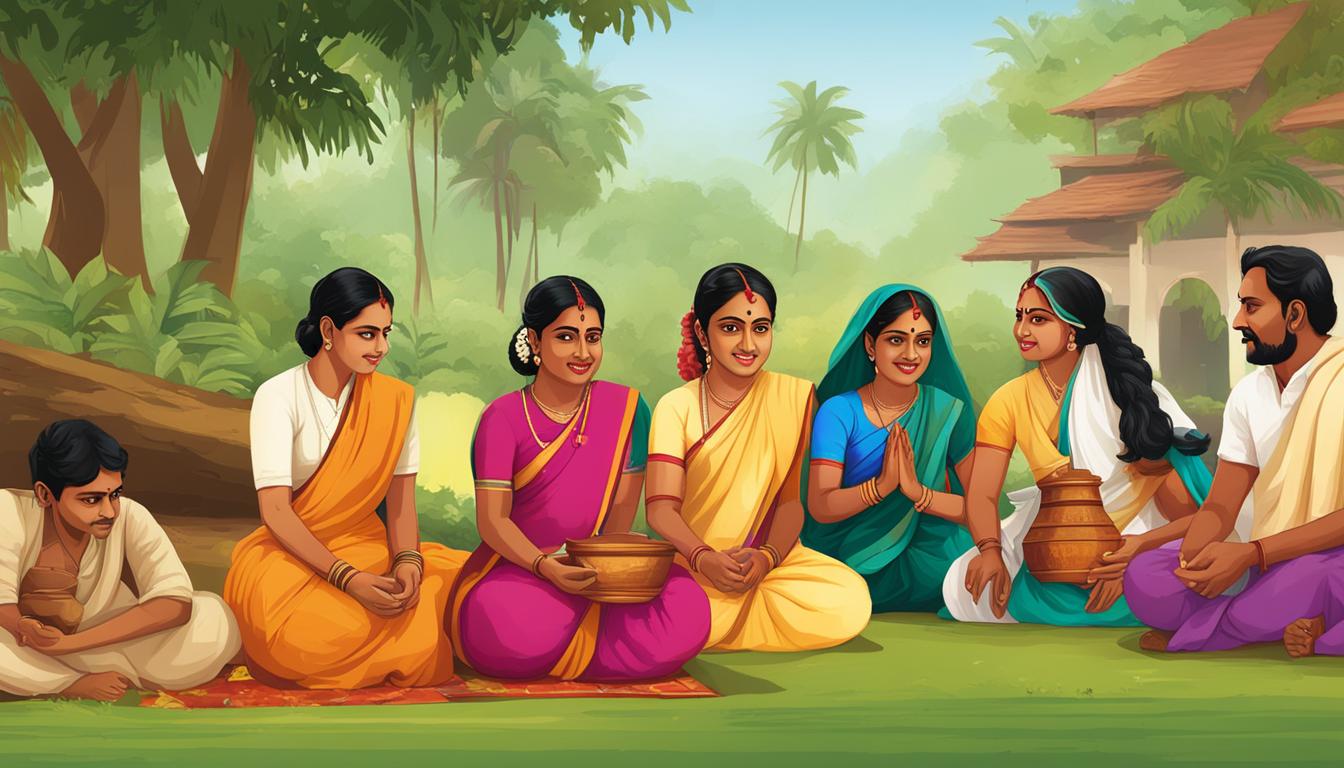The reformation movement in Kerala, which began in the late 19th century, brought about significant social changes in the state. Kerala’s society was deeply entrenched in the caste system, with untouchability and discrimination prevailing. However, a group of visionary social reformers emerged during this time who challenged these practices and fought for equality and progress.
- Social reformers in Kerala played a crucial role in challenging discriminatory practices.
- They advocated for equality and served as champions for the oppressed communities.
- Their efforts contributed to significant social changes in Kerala’s society.
- The reformation movement in Kerala began in the late 19th century.
- The group of visionary social reformers fought against untouchability and caste-based discrimination.
Ayyankali: Championing Dalit Rights and Social Equality
Ayyankali, born into a Dalit family in Venganoor, Thiruvananthapuram, played a crucial role in the social reform movement in Kerala. As one of the first social reformers from a Dalit background, he defied societal restrictions and fought for the rights of the oppressed communities.
Ayyankali challenged the caste-based discrimination prevalent at the time, advocating for access to public places, dignified clothing, education, and fair wages for agricultural laborers.
Despite facing severe opposition and discrimination, Ayyankali fearlessly led the way towards a more inclusive society. his efforts were instrumental in giving a voice to the oppressed and marginalized sections of the society, fight for social equality, and uplift the Dalit community.
Ayyankali’s work laid the groundwork for future social movements and significantly influenced the fight against caste discrimination in Kerala, shaping the path towards a more egalitarian society. His contributions have left a lasting impact on the rights of Dalits, inspiring generations to continue the struggle for social justice.
Vaikom Satyagraha: A Milestone in the Fight Against Untouchability
The Vaikom Satyagraha, which took place between March 30, 1924, and November 23, 1925, marked a significant milestone in the fight against untouchability and caste discrimination in Kerala.
Spearheaded by leaders like T.K. Madhavan, K.P. Kesava Menon, and K. Kelappan, the Satyagraha aimed to challenge the social injustice faced by the oppressed classes, particularly the Ezhavas, who were prohibited from walking on the roads surrounding the Vaikom Mahadeva temple.
During the Satyagraha, protesters, led by Mahatma Gandhi, marched peacefully to protest against untouchability and demand the temple entry proclamation, which allowed everyone, regardless of their caste, to enter the temple premises.
This nonviolent protest drew national attention and highlighted the pressing issue of caste discrimination prevalent in Kerala society. The Vaikom Satyagraha became a symbol of resilience and ignited a broader movement for social change and equality.

The Vaikom Satyagraha: A Milestone in the Fight Against Untouchability
The Vaikom Satyagraha, which took place between March 30, 1924, and November 23, 1925, marked a significant milestone in the fight against untouchability and caste discrimination in Kerala. Spearheaded by leaders like T.K. Madhavan, K.P. Kesava Menon, and K. Kelappan, the Satyagraha aimed to challenge the social injustice faced by the oppressed classes, particularly the Ezhavas, who were prohibited from walking on the roads surrounding the Vaikom Mahadeva temple.
The temple entry proclamation, which mandated the opening of temples to all castes, had gained momentum with previous movements led by reformers like Ayyankali. However, the Vaikom Satyagraha brought the issue into sharp focus, drawing national and international attention. Thousands of protesters took part in this nonviolent struggle, demanding equal rights and the end of untouchability based on caste.
The Vaikom Satyagraha was not just a protest against temple entry restrictions but a symbolic stand against the larger system of untouchability that plagued Kerala society. It ignited a public discourse on the need for social reform and laid the foundation for the subsequent Kerala Renaissance.
FAQ
Who were the social reformers in Kerala?
The social reformers in Kerala were visionary individuals who emerged during the late 19th century and fought for equality and progress in the state.
What significant social changes did the reformation movement bring about in Kerala?
The reformation movement in Kerala challenged the caste system, untouchability, and discrimination prevalent in the society, leading to significant social changes.
Who was Ayyankali, and what was his role in the social reform movement in Kerala?
Ayyankali was a Dalit social reformer from Kerala who played a crucial role in challenging caste-based discrimination and advocating for the rights of oppressed communities.
What were some of the issues that Ayyankali fought for?
Ayyankali fought for access to public places, dignified clothing, education, and fair wages for agricultural laborers.
What is the Vaikom Satyagraha, and when did it take place?
The Vaikom Satyagraha was a significant event that occurred between March 30, 1924, and November 23, 1925. It aimed to challenge untouchability and caste discrimination in Kerala.
Who were the leaders behind the Vaikom Satyagraha?
The Vaikom Satyagraha was spearheaded by leaders such as T.K. Madhavan, K.P. Kesava Menon, and K. Kelappan.
Which communities faced social injustice and discrimination during the Vaikom Satyagraha?
The Ezhavas, a community in Kerala, were particularly affected by social injustice and discrimination during the Vaikom Satyagraha.
What was the main objective of the Vaikom Satyagraha?
The objective of the Vaikom Satyagraha was to challenge the restrictions imposed on the lower caste communities in accessing the roads surrounding the Vaikom Mahadeva temple.
When was the temple entry proclamation made?
The temple entry proclamation, which aimed to end caste-based restrictions on temple entry, was made in the early 20th century.
